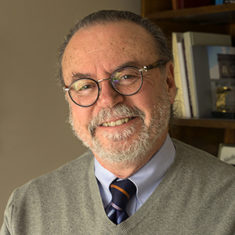Mass Media Are Still The Best Channels For Reaching The General Public.
By Thomas J. Roach
When it comes to free public communication, mass media are still the best channels for reaching the general public.
Social media and web pages are best used for targeted communication. Important networking publics interface on social media, and websites are visited by costumers researching products and services, and by competitors and those seeking employment.
All are important publics, but they are a small subset of the community in which we do business. Unless a company can generate a post that goes viral, digital communication is constrained within an important but limited audience.
It is true that today there are fewer local newspaper, radio and television outlets, and fewer people are accessing them, but mass media are still the best way to reach the general public. Local newspapers and radio stations provide news over a wide area of topics and to the broadest demographic.
Organizations that can get news coverage in mass news media are being proactive about their reputations. When zoning issues are before the city council and class action lawsuits are in the courts, the reputation of a quarry has a big impact on the outcome.
If an organization waits for reporters to call, chances are the news will be negative. Reporters define news according to the following criteria: controversy, novelty, prominence, timeliness and proximity. That is why quarries are ignored until blasting starts to threaten encroaching neighborhoods and trucks begin to slow the flow of traffic. A NIMBY group complaint is practically guaranteed to become a news story; it has conflict, proximity and timeliness.
Smart Management
Smart management can offset the sometimes-inevitable negative news stories by putting out media releases that emphasize novelty, proximity and timeliness. New technology is newsworthy because it represents novelty and timeliness. Stories about production processes and hiring announcements appeal to the proximity and timeliness criteria.
Newspapers have to fill pages with news stories, and radio and television stations need to fill time slots. Stories in the form of media releases submitted by local organizations help them meet this need and make them more profitable because these stories do not require the expenditure of resources.
The media release, then, is a win-win proposition. A quarry gets mentioned in a news story that shows it to be a productive member of the community, and the media organizations get help meeting their news quota.
Two Reasons
News organizations are not concerned with the reputation of the organization that sends them a media release. They are interested for only two reasons: one, the story has to be newsworthy, and two, it has to be easy to process.
Newspapers do not use bullets, put extra spaces between lines and paragraphs or print words in all capital letters. They always indent for paragraphs, use full names and job titles, and write short sentences in short paragraphs. They never use words like “cutting-edge,” “unique,” or “exciting,” because they are opinion, and they reserve their opinions for the editorial page.
Editors receive hundreds of media releases a week and can only use a very small percent of them. Which ones do they use? Not the ones that have to be rewritten. The more a media release looks like it was written by a reporter, the more likely it is to be printed. Less than 5% of media releases are printed or broadcast.
Writing in news style is very formulaic, and not hard to learn. The first sentence must include who, what, where, when, and possibly why and how. The second sentence should be the next most important information.
The third sentence should have the next most important information, and it should probably start a new paragraph.
If it is financially feasible, hiring someone with a public relations or journalism degree, or engaging a consultant can be a good investment.

Thomas J. Roach Ph.D., has 30 years experience in communication as a journalist, media coordinator, communication director and consultant. He has taught at Purdue University Northwest since 1987, and is the author of “An Interviewing Rhetoric.” He can be reached at [email protected].
